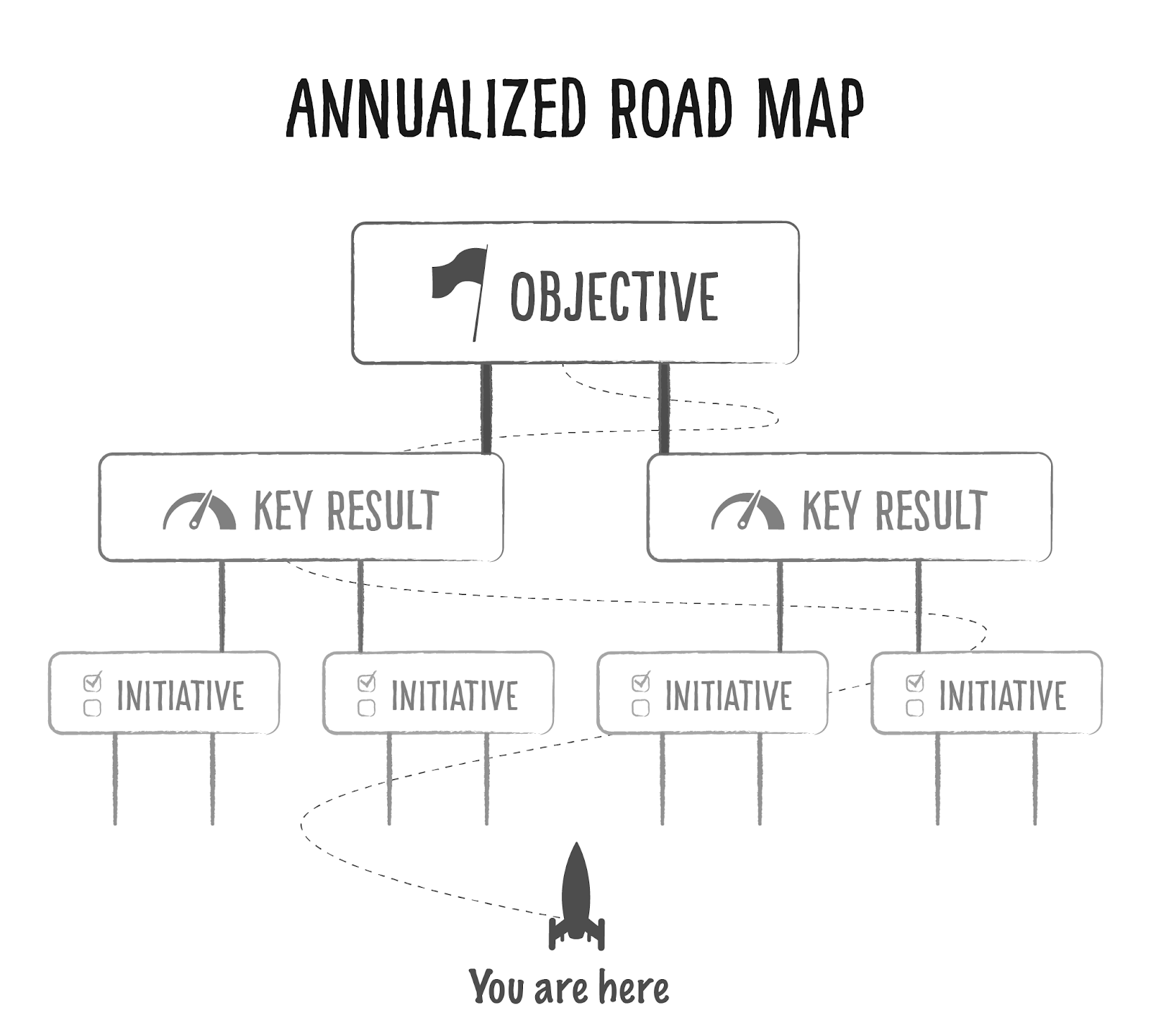Running a business is a lot like piloting a ship; above all, you need to know where you’re going and how you’re getting there. What’s more, you need a crew that knows how to back you up when you need it most.
Objectives and key results, or OKRs for short, are a time-tested methodology for ensuring that you and your company have the smoothest sailing possible. They make it easy to set and track company goals so that your entire team knows what needs to be done, how to do it, and why it matters in the larger vision of your business.
The OKR framework has helped countless businesses synchronize their teams and realize ambitious goals, launching their companies to new heights.
This guide will walk you through the process of implementing OKRs in your own company, making them a value-driving component of your operating system.
In this guide, we’ll cover the five parts of an effective OKR process, including:
- The OKR framework
- Setting annual objectives
- Creating an annualized roadmap
- Quarterly planning
- How to establish a rinse-and-repeat cadence
Every step in this generalized guide will apply to the majority of startups, but some will benefit from additional frameworks that aren’t included. To get started, make a copy of the OKR framework and template. You may want to refer to the overview on slides 3 and 4 of the deck.
Framework and ownership
OKR framework
OKRs have a very specific framework that is integral to the success of the methodology. There are several key components of an OKR process, which will each be explored more deeply later. They are:
- Annual objectives. These are the big picture items for your business. They’re your ultimate goals, your guiding light. Serving to unite a company’s vision and inspire teams, strong annual objectives are key to a successful OKR framework.
- Key results are goals that drive progress towards your annual objectives. They are more data-focused, including quantifiable metrics that prove your company is on the right course.
- Initiatives are the projects and tasks that ladder up towards your key results. In other words, Initiatives are the things that need to happen in order to achieve your key results.

If your company is a spaceship, your annual objectives are the destination. Image: M13
If your company is a spaceship, your annual objectives are the destination. The key results are the dials on the console that show your speed and indicate whether you’re on course, and the Initiatives are the actions of the crew and pilot that keep the course steady and the engines burning.
It’s important to understand the differences between each piece of the OKR framework, as it can be easy to confuse them in the beginning. Without a strong distinction between each component, it will be much harder to implement your OKR process successfully.
Establishing ownership
A clear ownership structure is vitally important to the OKR framework. Without a dedicated captain, you’ll find yourself wasting resources and letting details fall through the cracks.
We recommend establishing a point person to take top-down control of the OKR process as early as possible.
This person should interact closely with leadership and understand the big picture of your business. Operations Managers and Chiefs of Staff are typically good choices for this role.
Annual objectives
Annual objectives are the big picture items for your business. They’re ambitious, large-scale goals that you and your team can look to as a reminder of your company’s purpose and direction.
When setting your objectives, ask yourself what will move your company forward and create meaningful change in your business. Which company goals are most pressing? What would you like to see happen in the next year? What core tenants of your model can you expand upon and improve?
What makes a good objective?
Creating a good annual objective may seem simple at first glance, but it takes a bit of practice to get right. Annual objectives must have a specific format to function properly in the OKR framework.
Objectives are:
- Big-picture goals that relate directly to the most important aspects of your business. They should be doable, but ambitious. There’s nothing wrong with falling a little short – in fact, failing some of your objectives is a sign you’re using them correctly. In a given year, around two-thirds of your annual objectives should be completed.
- Clear and concise. An annual objective that is more than one sentence long is uncommon. You want a simple, punchy statement that your team will be able to remember easily.
- Strategic and specific to your business. They should set a destination for your company, the path to which will be plotted by other elements of the OKR framework.
As a counterexample, let’s take a look at what you should avoid when creating your objectives.
Objectives are NOT:
- One-off tasks that can be completed quickly. They should be ambitious, relevant for the entire year, and push the limits of what you think your business is capable of achieving.
- KPIs. While objectives can occasionally contain a measurable output, you should steer away from simply stating a metric as your objective. The goal of your objectives is to define the greater purpose of your work without focusing too heavily on data-based measurements.
- Boring. When you set an annual objective, it should tell a compelling story. The best objectives use language that is inspiring and action-based.
Four is the magic number
Five fundamentals for creating an effective OKR process by Walter Thompson originally published on TechCrunch















 English (US) ·
English (US) ·